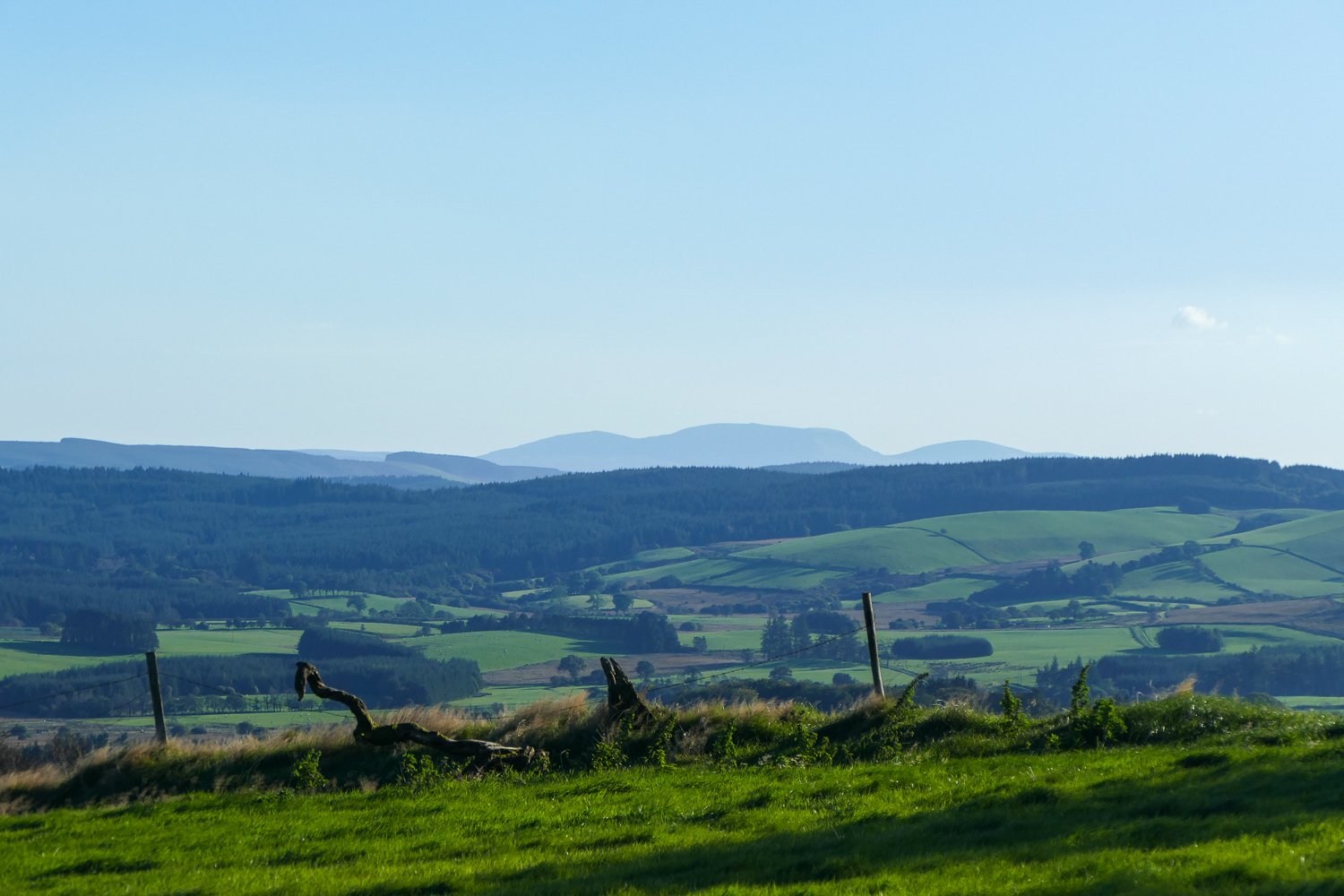Inspiration from the Woodland Trust, and how our new tree planting is starting to feel like young woodland
May and June are always exciting months as spring starts to move into full bloom. This year has felt particularly special as even the trees at higher altitude, taking longer to establish than those lower down, have started to shoot up; a walk to the summit now feels like walking through young woodland rather than new planting. Adding to this feeling of naturalisation is the fact we’ve started collecting the tree guards. Having been told they would degrade naturally, this was not something we had anticipated having to do. What this means in practice however is that the guards break down into billions of microplastics polluting the environment, an issue rarely discussed in the frenzied push to plant more trees. Today, an estimated 700 million of these shelters have been used in our countryside.
Taking the decision to remove our tree guards was therefore easy, both for aesthetic and environmental reasons. But the practicalities of removing them has proved more difficult, and after collecting about 2,000 guards ourselves and with another 73,000 still to go, we soon concluded we needed help. We’ve now collected about a third of our tree guards, but the cost has been eye watering. This includes paying almost twice the cost of landfill to have them recycled, which just seems ludicrous.
Although there are different views on the effectiveness of tree guards, the overwhelming advice is that they are essential to establishing and growing young trees in many situations, including ours at Lofftwen. Still, we can’t help feeling there must be a better way. Which is why on a recent trip to the Woodland Trust’s Ben Shieldaig project in the Scottish Highlands, I was delighted to hear from the Trust’s chief exec, Darren Moorcroft, how they are spearheading the search for alternatives to plastic tree guards. One of these includes guards made from sheep’s wool, apparently laced with small amounts of chilli to stop them being nibbled. By backing this project with an order for millions of tree guards, they hope to spearhead the sector, enabling it to scale up while also reducing costs for other smaller scale planters. This could solve two major rural problems, massively reducing the amount of plastic in the countryside while also creating additional demand for wool, which despite its incredible properties can have so little value today it even ends up in landfill.
There were many good reasons for taking the approaches we took when planning the planting back in 2017/2018, but with the luxury of hindsight, as we trudge around collecting tree guards, I sometimes regretted we didn’t try and do things a little differently. There is a saying in the Woodland Trust that “the best time to plant trees is twenty (or in our case four) years ago. The second best time is today”. Walking through the lush new woodland towards Lofftwen’s summit on a beautiful early summer evening through a backlit swaying forest of birch, cherry, rowan, oak, aspen, fir and pine (to name a few), and accompanied by the chatter of stonechats, linnet, song thrush, skylark, meadow and tree pipits, any regrets were quickly washed away.
If you don’t already, please consider supporting the Woodland Trust. Having spent several days with them last month our respect and admiration for their work, knowledge, and enthusiasm has grown even more than our trees. And here’s more on their ambitious Ben Shieldaig project.
If you are interested in staying at the Lofftwen Longhouse and exploring the hundreds of miles of rarely travelled footpaths and bridleways in the Cambrian Mountains, known as the Last Wilderness of Wales, you can book directly through the Lofftwen website or through Canopy & Stars.












